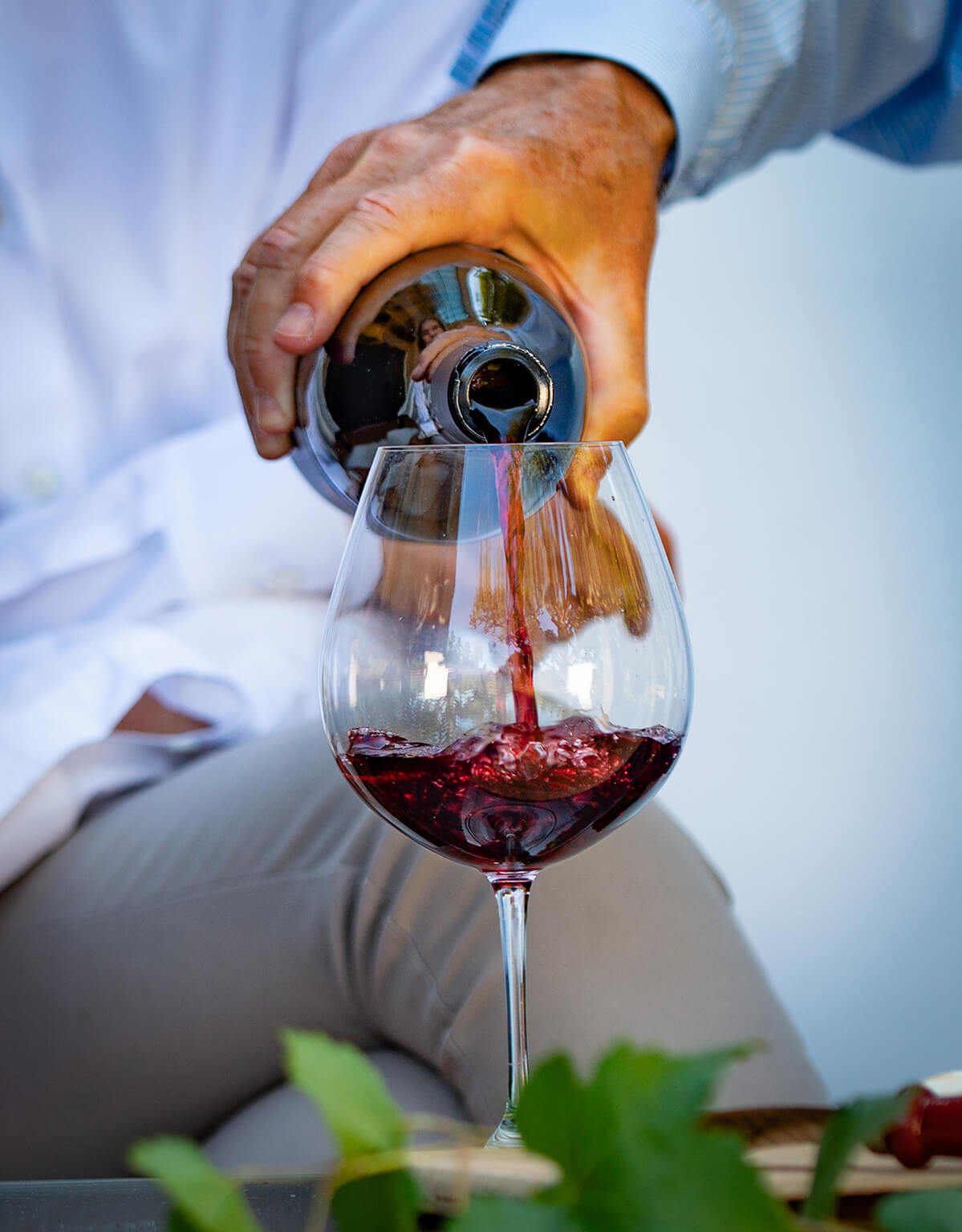Words by Linda Hubbard
Mention “Blumenkranz” on the Mid-Peninsula and people are likely to immediately think “doctor.” Indeed, Mark is a retired ophthalmologist specializing in retinal disease who continues to teach at Stanford, and Recia is a not-quite-retired dermatologist practicing in Menlo Park.
But talk to wine enthusiasts, and you’ll find they are known increasingly for the Burgundian-style wine they sell, all produced from grapes grown on their Portola Valley property. Whether you call it a residential, hobby or backyard vineyard, their joint venture results in a Pinot Noir with Blumenkranz on the label.
They initially planted their one-acre vineyard in 1995, using three different Pinot Noir clones on three different hillside blocks—all with slightly different microclimates. Some are shaded with old oaks and redwoods. Two of the blocks have a southeastern exposure and one has a northwestern exposure, which typically results in the latter being harvested two to three weeks later than the former. Over 1998 and 1999, they produced their first vintage.
“We would drink the wine we produced ourselves and give it to friends as house gifts,” says Recia. “People seemed to really like it, and we’d get compliments.” Adds Mark: “It’s the idea of sharing—that’s the reason we decided to sell it. It’s not a business for us; it’s a passionate hobby.”

Recia and Mark, who married in 1975, met when he was a medical student at Brown and she was an undergraduate. Mark knew he wanted to be a doctor since grade school—his father was a physician. Recia’s calling came later, when she was in college. In addition to their professional responsibilities, they raised three children and have three grandchildren.
They’ve both always enjoyed the wines of Burgundy, France. Now they enjoy discovering how each vintage produced from their vineyard is distinct.
To get the grape vines planted, Mark enlisted the help of a former patient, Steve Pessagno, who had worked at a number of larger vineyards. “He and I literally physically planted the grapes,” recounts Mark, who explains that the land is ideally suited to growing grapes. “It was chosen by Leland Stanford for horses and grapes in the late 19th century. It’s a combination of the soil and the light and the climate. Plus, we get coastal fog and also have great sun. You could plant anything here! And grapes are relatively drought-resistant and provide a good fire break.”

To combat birds eating the grapes, they cover the vines with netting. “I’m surprised that more people here aren’t using nets,” observes Mark. “It may be that the birds are more active in our vineyard because we are up on a hill with lots of trees where the birds hang out as compared with the flatter lands with fewer trees and birds. I know that’s true in Napa.”
To maintain the vineyard, they pay great attention to sustainable farming practices. No chemicals are used, only organic elements. And while they manage the vineyard, they don’t make the wine. The day-to-day viticulture, crush and winemaking is handled under contract by Coastal Range Vineyards, who provide that service to a number of private vineyard estates in the Santa Cruz Mountains.
Mark works closely with Peter Kirchner, Coastal Range’s principal winemaker. They jointly determine how the wine is produced. “We both share a common philosophy of the primacy of the fruit in that process, and the need for the wine to express the unique terroir of its origin,” says Mark. “We favor a more nuanced Burgundian style, with minimal handling and very light oak, rather than the heavier fruit-bombs that have become somewhat popular in certain regions.”
Both harvest time (October 2 and 23 this year) and the winemaking take into account the varying degrees of sunlight and precipitation as well as other climatic and environmental factors that affect grape yield and quality. “That typically influences the particulars of fermentation and length and type of barreling chosen,” Mark continues. “We attempt to balance the need for the wine to be enjoyed early but have sufficient structure to evolve and improve over time as well.”

The couple thought about buying more land elsewhere, such as in the Petaluma Gap or Sierra foothills. “But at the end of the day, we produce more wine than we can drink—about 50 cases a year,” says Mark. “We’re just lucky that people are willing to buy it and give it a try.”
The wine is available at Roberts Markets in Portola Valley and Woodside as well as Bianchini’s in Portola Valley and San Carlos. It’s also served at Portola Kitchen in the Ladera Shopping Center.
“I do tastings at Bianchini’s during their Buy Local promotions,” shares Recia. “It’s always so much fun seeing so many old friends and patients!”
Both Recia and Mark underscore that they’ve always liked living in rural environments. Miniature olive trees dot the property, and they grow a lot of the food they eat. They view themselves as gentleman/woman farmers living off the land. And they are grateful for what the land gives them.


